Text
Data Acquisition System: An Overview

Introduction
In today's world, data is king. Organizations across all industries are leveraging data to gain insights into their operations, customers, and markets. However, the process of collecting data is not always straightforward. This is where a Data Acquisition System (DAS) comes in. A DAS is a system that collects and stores data from a variety of sources, making it available for analysis and decision-making.
What is a Data Acquisition System?
A NI DAS is a system that collects data from various sources, such as sensors, instruments, and other devices, and stores it for analysis. The system can be hardware-based or software-based, and it can be used in a variety of industries, including manufacturing, healthcare, and transportation.
Hardware-based DAS typically consists of a computer, data acquisition cards, and sensors or instruments that measure physical quantities, such as temperature, pressure, or voltage.
Software-based DAS is a computer program that collects data from various sources, such as databases or files.
Applications of Data Acquisition Systems
Data Acquisition is widely used in many industries, including manufacturing, healthcare, and transportation.
In manufacturing, DAS is used to monitor and control processes, such as temperature, pressure, and flow rate. This helps ensure that the products meet quality standards and that the manufacturing process is efficient.
In healthcare, DAS is used to monitor patients' vital signs, such as heart rate, blood pressure, and oxygen levels. This helps healthcare professionals make informed decisions about patient care.
In transportation, DAS is used to monitor the performance of vehicles, such as speed, fuel consumption, and engine temperature. This helps fleet managers optimize vehicle performance and reduce costs.
Stats:
The global data acquisition (DAQ) market size was valued at USD 1.8 billion in 2019 and is expected to grow at a compound annual growth rate (CAGR) of 6.8% from 2020 to 2027. (source: Grand View Research)
The healthcare industry is expected to hold the largest share of the DAS market by 2025. (source: MarketsandMarkets)
Conclusion
In conclusion, a Data Acquisition Software System is a powerful tool for organizations looking to collect and analyze data. Whether it is used in manufacturing, healthcare, or transportation, a DAS can help organizations make informed decisions that lead to improved performance, increased efficiency, and reduced costs. As the importance of data continues to grow, we can expect to see the use of DAS become even more widespread across industries.
#DAQ System#Data Acquisition System#Data Acquisition Software#Data Acquisition#NI DAQ#Automated Data Acquisition Systems
0 notes
Text
CONSULTATION SERVICES – TMCS

National Instruments software has been a technical pioneer and leader in virtual instrumentation for than four decades, a groundbreaking notion that has altered the way engineers and scientists in business, government, and academia approach measurement and automation. Everything from prototyping and probability analysis to project management and the integration of third-party software and hardware may be done quickly.
TMCS is a National Instruments, USA Silver Alliance Partner (system integrator/applications expert) capable of handling system design, system integration, and applications engineering utilizing any combination of National Instruments' high-performance software and hardware solutions.
OUR CAPABILITIES INCLUDE
Turn-key Systems Engineering
Software Development for Measurement, Data Acquisition, and Control Applications
System Engineering, Hardware and Software for Sophisticated Networks for Distributed Data Acquisition and Control Systems
Design and Assembly of Complete Control Panels and their Integration
Data Acquisition Systems
Data Acquisition Systems often referred, as the process of digitizing data from the world around us so it can be displayed, analyzed and stored in a computer. DAQ system applications are usually controlled by software programs developed using various programming language such as C, C++, Python, NI LabVIEW.
Data acquisition is a critical component of contemporary test and measurement systems, and National Instruments LabVIEW (short for Laboratory Virtual Instrument Engineering Workbench) is a prominent software tool for this purpose. LabVIEW is a graphical programming language that enables engineers and scientists to rapidly and simply construct unique test and measurement applications.
One typical use for NI LabVIEW is the creation of test benches, which are systems meant to automate the testing of electrical or mechanical components. These test bench may be used to do functional testing, stress testing, and other sorts of testing, and they can considerably increase the efficiency and accuracy of testing operations.
NI 6001 Multifunction I/O- Based System
USB Multifunction I/O Device – 8 AI (14-Bit, 20 KS/s), 2 AO (5 KS/s/Ch), 13 DIO
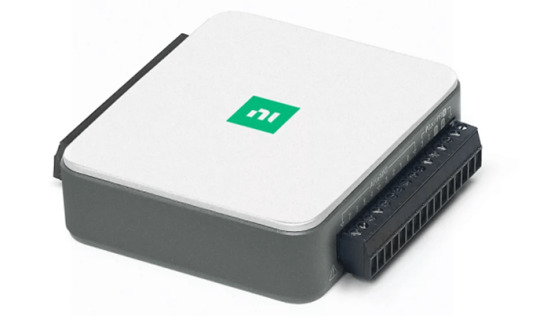
Description:
Multifunction I/O device
32-bit Counter
Data Logging
Portable Measurements
Data Acquisition system for Verification Validation
NI CDAQ 9185 for Data Acquisition
CompactDAQ Chassis – 4-Slot, TSN-Enabled Ethernet CompactDAQ Chassis
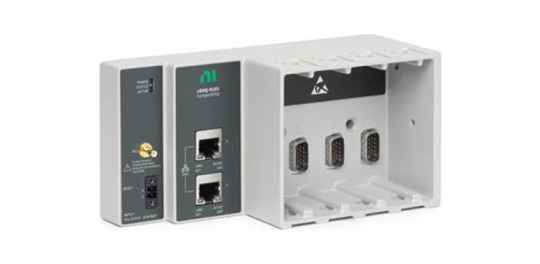
Description:
Controls Timing Synchronization between NI modules and host
Connectivity Options – USB, Ethernet, Wi-Fi
Multiple Hardware timed operations
For limited channel count data acquisitions which needs measurement from multiple networks, signals and sensors, the Compact DAQ is the ideal choice.
NI CDAQ 9181 for Data Acquisition
CompactDAQ Chassis 1 Slot, Ethernet CompactDAQ Chassis
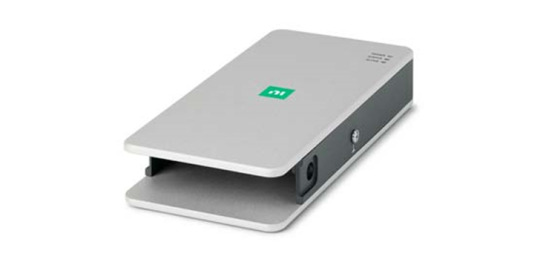
Description:
Created for compact, decentralized sensor measurement systems.
Manages the timing synchronization of NI modules with the host
May be used to produce a mix of analogue, digital, and counter/timer measurements by combining C Series I/O modules.
NI 9234 for Vibration Monitoring system
C Series Sound and Vibration Input Module, 2-Channel, 102.4 KS/s/Ch Simultaneous, ±5 V

Description:
Vibration and Sound Input Module
software-selectable coupling for AC/DC
IEPE short/open detection,
Signal conditioning for IEPE
Signal conditioning for IEPE
Comes with the NI DAQmx driver setup tool.
Supports Python, C++, and NI programming environments.
The system calculates displacement, velocity, and acceleration.
2 notes
·
View notes
Text
Theta Measurement and Control Solutions Pvt Ltd (TMCS)

Theta Measurement and Control Solutions Pvt Ltd (TMCS), established in 2013, is an industry leader in providing cost-effective industrial automation, test, measurement, and control solutions. This has enabled customers to provide cutting-edge technology solutions. We specialize in designing custom automated test equipment that is made to order to meet each customer's unique requirements. This includes commissioning measuring devices, software, data collection and control systems, and data gathering hardware that complies with industry standards.
We are committed to providing on-time, value-added test and measurement solutions with LabVIEW proficiency for production and R&D settings in the steel, process, aerospace, and automotive sectors.
Steel, oil & gas, automotive, power & electronics, military, and many more sectors, among many others, employ our goods. TMCS works with National Instruments Software as a System Integrator for the creation of NI LabVIEW software and data gathering devices.
Engineers with extensive experience who are adept at evaluating needs, developing ideas, and creating formats specifically suited for those needs found across many industries supervise the work at TMCS. The TMCS team provides end-to-end solutions as well as services including integration, delivery, installation and commissioning, training, and end-to-end solutions while providing unwavering support throughout all development phases.
AUTOMATED TEST EQUIPMENT SERVICES
To conduct tests on various devices, commonly referred to as devices under test, a device called Automated Test Equipment Companies (ATE) is built (DUT). An ATE Test efficiently completes tests that calculate and quantify a DUT utilizing automated information technologies and control systems. ATE testing is often used in electronic component manufacture, wireless communication, radar, and automobile testing. The integration of whole systems and connected subsystems is a Speciality of Automated Test System TMCS. We have achieved ATE Testing - related tasks using flexible, software-centric interfaces. With the most recent designs, real-time measurement and analysis are possible with better performance by modifying the functionality of commercially available off-the-shelf components.
Expanding client expectations, stringent restrictions, clearly outlined important standards, and constrained time to market present significant challenges for every company offering test and measurement solutions. To deliver the required throughput, the test system needs to have strong integration, flexibility in device communication, and superior synchronization. With the assistance of the TMCS 'Team of expert engineers, your success and system lifespan will be increased.
Functional Test Bench
Benefits:
Data base management for every UUT (Unit Under Test)
Automated functionality without human interference
Testing time saved
Improved production capacity
END-OF-LINE TESTER SERVICES
End of line testing (EOL Testing) systems can be used to measure and test electronic control units, mechanical parts, and related systems for cars. Important factors to take into account are a high-test volume, test completion rates, and affordable system upgrading costs. Nowadays' complicated automotive electronics make having a flexible test platform necessary. The End of Line Testing platform that TMCS delivers is flexible and ensures perfect consistency.
Each sort of UUT may be tested thoroughly, quickly, accurately, and without mistake using an end-of-line system.
Motor Test System
The control panels' features include: - EOL testers are designed to regulate and record data from a motor that is being tested.
- A number of tests, including those for temperature increase and voltage control, may be run automatically.
- The display of Pass and Fail results will be dependent on preset data.
Alternator Test System
We were able to finish the test 12 to 14 minutes faster and reduce the test cycle time for the alternator by more than 10% by discovering and selecting the right NI resources. The Challenge: The customer wanted us to develop a system that would CONTINUOUSLY MONITOR the temperature rise throughout the heat-run test for testing alternators at the end of the line.
ECU Test Bench
ECU testing is often done with EOL System. All electrical cords must be manually connected before the operator may choose a model and begin testing. The management can decide the order in which various ECU model tests are run.
Outer Door Handle EOL Testing
Several door handle movements used by a driver to lock or unlock the automobile are mimicked on a test bench.
Spring Tester
An EOL tester is used to calculate compression and tension values for springs of various sizes. Using EOL Tester, test Signaling Group Relays the Excel table used to establish the testing order for each UUT (Group) is utilized.
Car Door Handle Tester
On a test bench, various door handle movements that a user may make to lock or unlock an automobile are simulated.
A door switch is pressed, a component is detected, and a capacitance test is performed.
The system is made up of an electromechanical and pneumatic assembly and an NI Hardware (Rugged Fan Less Embedded Controller) based system.
The system keeps track of the capacitance, current, and force.
System-Conducted Test:
Button Test
Capacitance Test
Hall Sensor Test
Part Presence Test
Capacitive Sensor Test
Test Monitoring is done for variables including current, force, displacement, speed, and magnetic field.
#Data Acquisition#NI DAQ#ATE Testing#ATE Test#Automated Test Systems#Automatic Test System#NI Alliance Partner#Data Acquisition System#Data Acquisition Software
1 note
·
View note
Text
HARDWARE-IN-LOOP (HIL) TESTING SYSTEM FOR FIRMWARE TESTS. - TMCS India

The software industry uses continuous integration (CI) extensively. CI methods are used to test firmware and software on real hardware that is easy to adapt to electronic designs and simulations. A developer could go through and manually watch these signals while testing, but that would waste a lot of time. Instead, a developer can build in tools that use the HIL test system to automatically sample desirable states. By adding hardware-in-the-loop (HIL) testing, developers can get more out of unit tests, regression tests, and functional tests. HIL testing can be very helpful for making sure that hardware accesses are working as expected and that all system outputs are also working as expected. When combined with HIL testing, continuous development (CD), continuous integration (CI), and continuous testing (CT) can speed up development, save money, and make the end product better.
How HIL Functions:
In HIL testing, a device and the environment are used to make the electronic control unit (ECU) feel like it is responding to real-world conditions. All the required electronic parts are present on the HIL test bench. In order to determine whether the system under test responds correctly to the inputs, a simulator exposes inputs to real systems, which then send signals to them.
Take the case of NI HIL testing for automobiles. A scenario where a car moving at 60 kmph around a bend in the rain runs into an unidentified object in the road or an approaching car veering across the center line can be created using HIL test scripts. The HIL test bench is equipped with cameras and radar that provide images to the ECU, which then uses that information to make decisions about what to do next.
Advantages of HIL:
For a number of reasons, HIL testing is an essential step in the modern software development process:
Without spending the time and money on physical testing, HIL testing may simulate hundreds or thousands of scenarios.
Situations that would be too risky or impractical to test in hazardous conditions can be accommodated by HIL testing.
The HIL tests can be repeated.
The HIL testing procedure is highly automated and supports multithreading, enabling numerous tests to run concurrently and accelerating the development process.
HIL offers a regular software release cycle with predictable system behavior.
Although HIL testing takes place after SIL testing, it still falls under the purview of the CI/CD/CT process and allows developers to find any issues before the product is released.
Results of HIL tests can be communicated to third parties and company development teams, accelerating the development process. Quality, dependability, and safety are all benefited from this.
HIL testing using NI:
HIL tests use simulation and modeling to evaluate embedded software on automotive ECUs. This cuts test times and increases coverage, especially for test cases that are hard to recreate in physical lab/track/field testing accurately. More than ever, HIL testing is required to guarantee the dependability of EV and ADAS/Active Safety systems that are developing quickly. As a test method, HIL is essential for figuring out how systems and vehicle domains are getting increasingly connected and dependent on each other as they work together to produce important vehicle qualities. The NI HIL solutions are open and adaptable.
About TMCS:

Theta Measurement and Control Solutions Pvt. Ltd (TMCS) mainly provides cost effective Industrial Automation, Test, Measurement & Control solutions. This enables customers to deliver state-of-the-art technological solutions. We are specialized in developing customized automated test equipment to meet their distinct requirements, which include commissioning industry standard automation, measurement hardware and software, data acquisition systems.
TMCS is a Silver Alliance Partner (system integrator/applications specialist) for National Instruments, USA, and is capable of handling system design, system integration, and applications engineering, using any combination of National Instruments’ high performance software and hardware products.
1 note
·
View note
Text
A Guide To Data Acquistion System - TMCS India

A data acquisition system is a system that consists of a computer, measurement devices, and sensors. Processing acquired data requires a data acquisition system, which gathers the information needed to comprehend electrical and physical processes.
For the purposes of engineering or scientific research, data acquisition systems can collect information about a real-world system and store it in an understandable, retrievable manner.
Essential components of Data Acquisition System:
Sensors:
Interacting with the entity being measured is the primary function of sensors and transducers. They convert physical phenomena like light, temperature, pressure, position, sound, etc. into a measurable signals like Voltage & Current.
Signal Conditioners:
The electrical signals collected by the sensors may be distorted by noise or interference and require processing before they can be used. Sometimes the signals are too weak for the data acquisition system to pick up. As a result, supplementary circuitry is employed for signal optimization. A signal conditioner is a technical term for this additional hardware. Therefore, signal conditioning is the act of making the signals as error-free as possible.
Analog-to-Digital Converters:
This DAQ module is responsible for digitizing analog inputs. It is the function of this chip to take information from its surrounding environment and translate it into discrete levels that a computer can understand.
Software Application (NI LabVIEW):
NI LabVIEW is well equipped for creating DAQ applications and it also supports many hardware devices. Within a manufacturing environment, LabVIEW is widely used for automated product testing, becoming the standard for the industry. Possible Integration with multiple hardware platforms makes LabVIEW the a Preferred Software development platform for engineers, designers and research scientists.
Parameters Measured on DAQ:
Many different parameters can be measured using a data acquisition system, including the following:
* Current
* Voltage
* Strain
* Frequency or time interval
* Pressure
* Temperature
* Distance
* Vibration
* Angles
* Digital signals
* Weight
Benefits of DAQ System:
* Accurate
* Flexible
* Scalable
* Programmable
DAQ Applications:
Automotive:
In order to ensure that the manufactured automobile parts are of the highest quality, data acquisition software & equipments are used.
NI Instruments:
The data acquisition (DAQ) devices offered by National Instruments are organized into distinct groups to facilitate the quick and simple selection. Types of these systems, such as temperature and strain, or common form factors, are used to quantify them.
Aerospace Defense:
Data acquisition products are used by virtually every aerospace industry and flight testing facility. These systems can function in a wide variety of contexts and conditions. Every DAQ system is put through its paces in the lab, in the telemetry control room, on the engine test stand, and on the flight line to make sure it performs as well as it needs to.
There are a wide variety of uses for these systems, including monitoring direct analog inputs or digitized parameters being tele-metered from an aircraft to a ground monitoring station, flight testing, range safety, missile testing, maintenance, and troubleshooting on (or next to) an aircraft, electromechanical testing in an aircraft hangar, component testing & validation, structural testing on military vehicles, and more.
Electronics:
The electronics sector makes use of data acquisition systems. They are used to measure heat output, resistance, conductivity, magnetics, etc., all of which play a role in electrical design.
1 note
·
View note
Text
TMCS - DATA ACQUISITION SYSTEM SERVICES

What is TMCS:
TMCS is a leading service provider of test and measurement solutions for nearly a decade. We cater to a diverse set of industries including Automotive, EV, Aero Defense, Engineering, Oil and Gas, Steel, and Pharmaceutical. Our automotive industry offerings include HIL (hardware in loop), EOL ATEs, Panel engineering solutions, and software development services.
At TMCS, we believe in competent skills, collaborative approach, effective consultation aided by detailed planning that can fulfill your requirement with no or minimum obstacles. Incepted in the year 2013, Theta Measurement and Control Solutions Pvt. Ltd (TMCS) mainly provides cost effective Industrial Automation, Test, Measurement & Control solutions. This enables customers to deliver state-of-the-art technological solutions.
We are specialized in developing customized automated test equipment to meet their distinct requirements, which include commissioning industry standard automation, measurement hardware and software, data acquisition system and control systems.
TMCS has presence in various industries:

DATA ACQUISITION SYSTEM SERVICES:
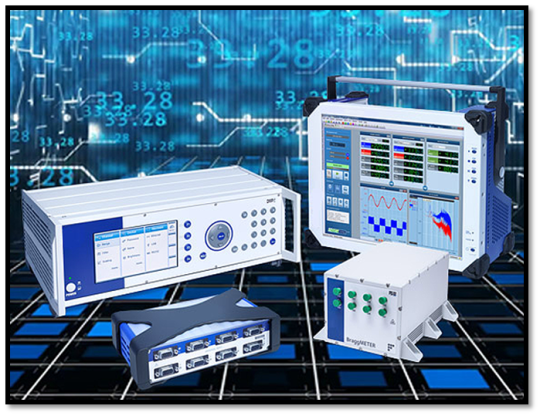
Data Acquisition Systems (DAQ System) have its contribution in a wide range of activities of day-to-day life. Most commonly, it is used to measure the electrical signals from some sensor. It is often referred, is the process of digitizing data from the world around us so it can be displayed, analyzed, and stored in a computer.
DAQ system applications are usually controlled by software programs developed using various using general purpose programming language such as Assembly, BASIC, C, C++, C#, Fortran, Java, Lab VIEW. TMCS is NI Alliance Partner we also provide NI Labview Software offshore consultation.
Purposes of Data Acquisition:
The primary purpose of a data acquisition system is to acquire and store the data. Data acquisition systems are principally in the business of measuring physical phenomena such as:
Temperature
Voltage
Current Strain and Pressure
Shock, Vibration Distance and Displacement RPM
Angle and Discrete Events Weight
For More Info, Click Below: https://www.tmcs.in/contact-us/
#Data Acquisition#Daq System#Data Acquisition System#Data Acquisition Software#Data Acquisition Software Companies#technology#software#tech news#tech updates
0 notes
Text
HOW ATE HELPS IN RAPID TEST EXECUTION? - TMCS India
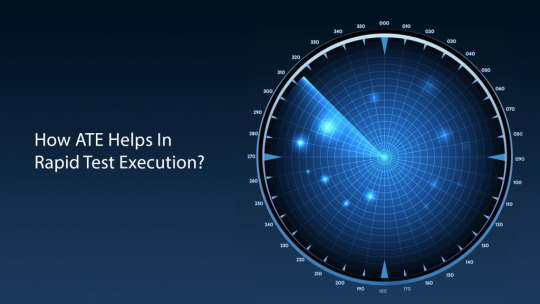
Testing a range of electric equipment in several industries, such as defense and aerospace, automotive, and industrial automation, requires effective data gathering and a diagnostic instrument called an ATE. In addition to guaranteeing that end users of electronic equipment obtain products that work and function as intended, ATE is directly responsible for ensuring they are not put in danger.
The market for automated test equipment was estimated to be worth USD 6.87 billion in 2020. From 2021 to 2028, it is anticipated to rise at a CAGR of 3.3%. Automated Test Equipment (ATE) usage in the semiconductor and automotive industries is fueling the expansion. This growth is driven by the number of connected devices and consumer electronics, as well as an increase in the firm’s focus on quality improvement and end-to-end testing solutions.
How is ATE Beneficial?
The terms “device under test” (DUT), “unit under test” (UUT), or “equipment under test” (EUT) is typically used to describe the device whose characteristics the ATE evaluates. ATE test a lot of the electronic gadgets that are in use today since they have so many benefits:
Faster and more accurate tests:
Since manual testing depends on the test engineer’s efficiency and expertise, the results’ speed and accuracy are only as good as the test engineer’s capabilities.
Reduced test and cycle times:
ATE’s capability in troubleshooting provides test and cycle time uniformity. This automation factor thus reduces work for engineers.
Reduction or prevention of data input errors:
Making mistakes is part of human nature. If there are no equipment-related technical problems, ATE always gets it right. It thus helps in maintaining accuracy.
Use of available engineering resources efficiently and cost-effectively:
Engineers may concentrate on the periodic testing issues rather than manually executing the tests using ATE. This results in the more efficient and economical use of engineering resources.
ATE Spotlight: National Instruments (NI):
Due to the lifesaving, mission-critical, and safety-critical electronics used in military aircraft, ships, ground vehicles, weaponry, missile launch, radar, and wireless communication systems, the aerospace and defense sectors are major consumers of ATE.
For crucial national security and safety reasons, these equipments must be evaluated more thoroughly than electronics used in other businesses. As a result, testing and validation before deployment consume a significant amount of time and money for aerospace and defense businesses.
Before being fielded by the DoD, almost everything from a missile launch system to the avionics systems on the newest fighter aircraft is evaluated and validated by aerospace and military industries, lowering the possibility of a launch failure or a Mayday crisis during a flight.
Devices tested by ATE include integrated circuits (ICs), printed circuit boards (PCBs), hard disk drives (HDDs), electronic systems, and line-replaceable units (LRUs) that support aircraft, spacecraft, and satellites – a family of technologies known as avionics.
TMCS’s expertise in ATE services:
India is one of the leading military forces in the world. This self-reliant initiative has accelerated the defense industry’s growth considerably in the past few years and this demand is constantly increasing. ATE Testing equipment exports are encouraged by the Make in India program and the industrial environment.
With years of legacy and constant research, TMCS, the NI Partner has developed the expertise to work on the test system requirements with NI, PLC, and Embedded solutions.
With these testing solutions, TMCS has assisted defense organizations in importing substitute options. TMCS’s vast experience in communication protocols on different hardware platforms for serial data bus communication, standardized power interface, environmental design, testing, and much more has helped them achieve excellence and success.
With these testing solutions, TMCS has assisted defense organizations in importing substitute options. TMCS’s vast experience in communication protocols on different hardware platforms for serial data bus communication, standardized power interface, environmental design, testing, and much more has helped them achieve excellence and success.
1 note
·
View note